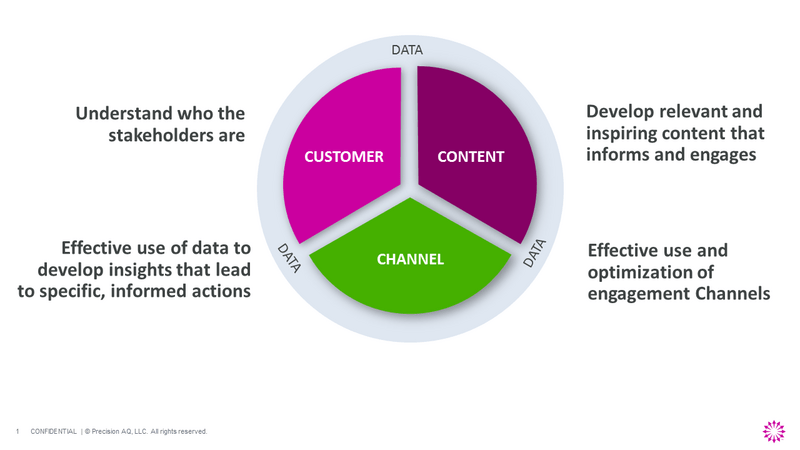Having an effective omnichannel strategy is pivotal for a successful product launch in pharma. The core components of this strategy, according to the experts from Precision AQ (formerly Across Health) who teach our Omnichannel Launch Excellence for Medical & Marketing course, revolve around the CUSTOMER, CONTENT, and CHANNEL, all intertwined with the critical element of DATA.
Each component plays a crucial role in ensuring that the launch is both impactful and sustainable.

1. CUSTOMER: Understanding who they are
The first core component is the customer. An in-depth understanding of the customer base is fundamental. This involves identifying and segmenting the target audience, understanding their needs, preferences, and behaviours.
By leveraging data analytics, pharma companies can gain various insights about patients, healthcare providers, and other stakeholders.
This understanding allows for the creation of tailored engagement strategies that resonate with specific segments, resulting in an enhanced effectiveness of communication efforts.
2. CONTENT: Developing relevant and inspiring material
Content is the second pillar of an omnichannel strategy.
The development of relevant, engaging, and inspiring content is crucial to capture the attention of the target audience. This includes educational materials, promotional content, and informative resources that address the needs and concerns of both patients and healthcare providers.
High-quality content not only informs and educates but also builds trust and credibility.
The goal is to create a compelling narrative that highlights the benefits and value of the new brand, thereby driving engagement and, ultimately, adoption.
3. CHANNEL: Effective use and optimisation
The third component is the channel.
In the digital age, there are numerous channels available to reach the target audience, including digital platforms, social media, email marketing, webinars, as well as traditional methods like in-person meetings and print media.
Effective use and optimised combination of these channels are essential to ensure that the right message reaches the right audience at the right time.
This involves strategic planning to determine the most suitable channels for different audience segments and continuously monitoring and optimising channel performance to maximise reach and impact.
The Role of DATA
Data is the thread that weaves these components together.
Only through effective use of data can the insights be developed that lead to specific, informed actions. By collecting and analysing data from various sources, brand teams can measure the effectiveness of their strategies, make data-driven decisions, and continuously refine their approach.
Data enables personalised interactions, real-time adjustments, and the ability to predict trends and behaviours, all of which are crucial for a successful omnichannel strategy.
